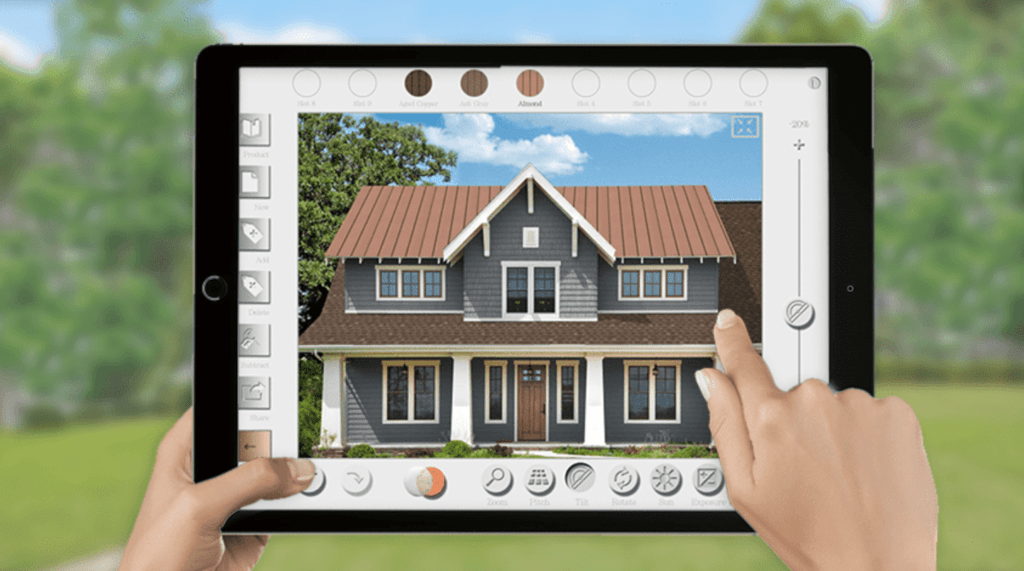Want to reduce your carbon footprint? How about just saving a little money on your monthly energy bill? With all the improvements in roofing technology over the past decade, there are now tons of ways to lower energy consumption in your home.
The optimal green roofing option will depend on your climate and budget. To find out more about the best efficient roofing methods for you, you should get in touch with a local roofer. Here are just a few of the most popular green roofing trends, that can lower your bills and make your home much more energy efficient.
1. Cool Roofs
Cool roofing is the original “green roofing”. In other words, we’ve known how to keep a home cool using light-colored roofing materials and ventilation for centuries. But these days, cool roofing has come a long way. New materials and synthetic coats or membranes reflect on sunlight and heat, keeping a residential or commercial building cool without the use of an air conditioner.
Installing a cool roof can be done in multiple ways, depending on the size and material of your roof. In some cases, you can have a new roofing material installed, such as reflective marble chips or granules. You can also install slate tiles or metal sheets that have been treated with a reflective glaze or membrane.
2. Solar Panels and Shingles
Solar panels are an efficient roofing trend that has improved exponentially in the last few years. New advancements in solar technology are making it more efficient and affordable for the average homeowner.
Solar panels absorb energy from the sun and convert it into energy that can be used in your home. These days, most home solar panels have an average efficiency of about 20% – that means that 20% of the energy absorbed by the panels is being converted. Which is a lot, compared to traditional roofing materials! New advancements are also making solar panels more attractive, such as solar skins, which can wrap your panels and help them blend in with the rest of the roof – this is great for commercial buildings.
Solar shingles are a newer technology that is becoming more accessible for homeowners. Like the name suggests, solar shingles cover your entire roof in shingle-sized solar sheets for maximum energy efficiency. While solar shingles are still more expensive to install than normal solar panels, the costs are going down year by year as the technology improves.
3. Garden Roofs
Let’s step back from all that new technology for a moment, and talk about the simplest way to make your roof more efficient: plant a garden on it! Garden roofs are becoming more and more trendy, and it’s not hard to see why: they’re efficient, attractive, and provide you with a pleasant outdoor space right on your roof.
Plant growth on your roof absorbs sunlight and keeps the inside of the building cool, while converting that energy into a nice outdoor landscape for you to enjoy. In certain climates, ferns, flowers, and even fruits and vegetables can easily be grown on a rooftop garden. Talk to a local roofer about the safest way to convert your roof into a green space.
4. Better Roof Insulation
Improvements in roofing insulation are also helping to make our homes more energy efficient. A well-insulated roof will maintain the temperature inside your home year-round. This is especially important in hot, dry climates, where the costs of running an air conditioner in your home can really add up.
The best insulation material will be light and air-tight – woven fiberglass and polyurethane spray foam are among the most popular options, but you should talk to a local roofing expert about the best insulation for your climate. There should also be a gap between the external material of your roof (shingles, etc.) and your insulation, to prevent heat from seeping into the material.
For commercial roofs, staggered insulation is a great way to keep the whole building cool. By layering different insulation materials in a staggered order, the entire area of the roof will be insulated without blocking ventilation.
5. Radiant Barriers
Installing a radiant barrier in your home is a super simple and cost-effective way to improve the efficiency of your roof. A radiant barrier is a flat, reflective film that can be installed beneath your roof’s underlay, usually in the attic.
A layer of radiant film will help to block out whatever heat is absorbed through your roofing material. Asphalt shingles, for example, can absorb a lot of heat on a sunny day. Radiant film in the attic will deflect that heat and stop it from warming your home. If you have exposed beams in your roof, such as in a cathedral ceiling, you may want to consider wrapping them in radiant film through the hot summer months.
A more energy efficient roof doesn’t have to be a huge investment. With just a few minor changes, you can save money on your energy bill, and help to conserve energy and protect our environment.

